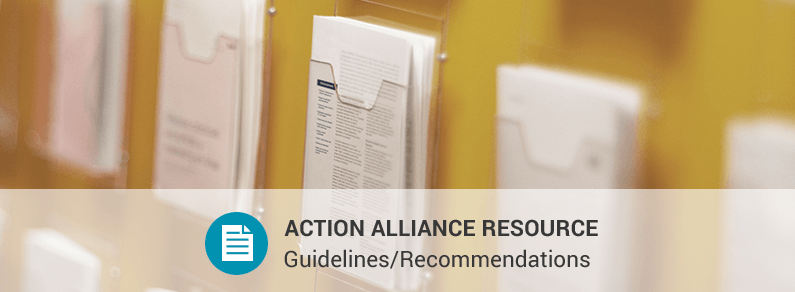Ensure Access to Effective Care and Treatment

Ensuring that effective care for suicide risk is available to individuals at risk for suicide is a key component of suicide prevention.
What Works
Elements of effective care and treatment for suicide risk include the following:
- Treatment for suicide risk should be evidence-based and focus directly on suicidal thoughts and behaviors along with treatment for mental and/or substance use disorders.
- Every community should offer multiple levels of care so that people at risk for suicide have ready access to the best available care in the least restrictive setting.
- Health and behavioral health care organizations should establish care pathways for patients with suicide risk to ensure they receive follow-up and referral services in a timely manner—particularly during high-risk periods.
Treatment should focus on suicide risk and underlying mental and/or substance use disorders.
Strategies to Consider
- Use telepsychiatry to facilitate access to mental health evaluations in settings or locations where they may not be readily available.
- Promote the integration of primary care and behavioral health care to increase access to behavioral health services in primary care settings.
- Train primary care providers to provide brief suicide prevention interventions, such as counseling on reducing access to lethal means and safety planning.
- Establish referral agreements between providers to ensure that patients have timely access to follow-up care.
- Improve discharge planning procedures to identify and address patient barriers to accessing needed follow-up care.
- Collaborate with key stakeholders to expand the capacity of community-level behavioral health and crisis services to meet the demand for these services and promote care in the least restrictive setting.
Take Action
- Visit the Zero Suicide website to learn about effective care for suicide risk.
- Integrate the elements of effective suicide care into your current work.
- Go to the Primary Care, Behavioral Health, and Emergency Departments sections of this website to learn more about suicide prevention in these settings.
- Learn more about the connections between substance abuse and suicide prevention by looking at Crosswalk of Suicide Prevention and Substance Abuse, SPRC Substance Abuse and Suicide Prevention Collaboration Continuum, and TIP 50: Addressing Suicidal Thoughts and Behaviors in Substance Abuse Treatment.
- Help reduce financial, cultural, and logistical barriers to effective suicide care.
- Explore our Best Practices Registry, a library of suicide prevention programs and interventions that incorporate best practices, national frameworks and culturally relevant approaches.
Recommended Resources

Suicide Prevention Resource Center's Best Practices Registry
SPRC’s library of suicide prevention programs and interventions that incorporate best practices, national frameworks and culturally relevant approaches.

Zero Suicide website
This website provides information, resources, and tools for implementing Zero Suicide.

Continuity of Care for Suicide Prevention: The Role of Emergency Departments
This guide highlights key steps that emergency departments can take to promote safe care transitions for patients with suicide risk.

CALM: Counseling on Access to Lethal Means
This free online course is designed to help mental health professionals counsel people at risk for suicide—and their families—on reducing access to lethal means.

Recommended standard care for people with suicide risk: Making health care suicide safe
These guidelines provide the first-ever recommendations on suicide-related standard health care for primary care, behavioral health, and ED settings.

David Jobes, PhD, on Evidence-Based Psychological Treatments and Suicide-Specific Brief Interventions
In these two brief videos, David Jobes describes evidence-based psychological treatments and suicide-specific brief interventions for people who have attempted or are at risk for suicide.
